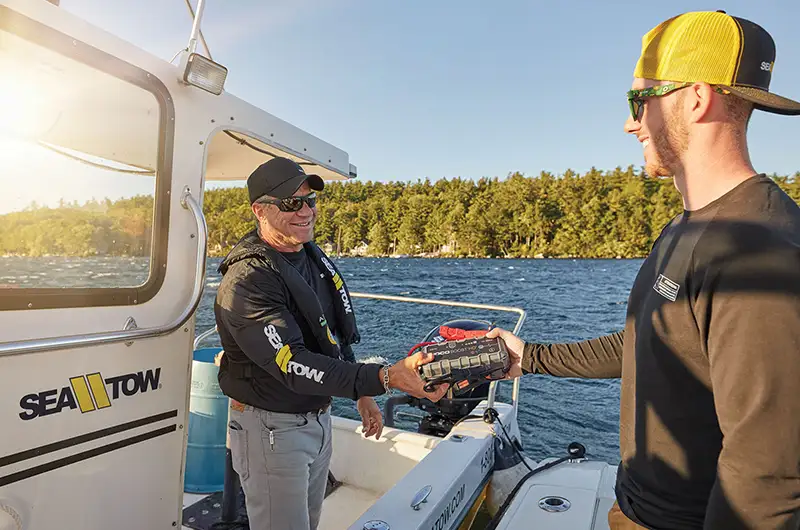
Even the most seasoned mariners can make boating mistakes every now and then. Here are some of the most common ones we see and tips on how you can avoid making them yourself.
Shifter in Neutral?
Sea Tow Captains ask the operator of a stalled boat a very simple question – “Is the boat’s engine in neutral when you try to start it?”
“It can be something as simple as the boat being in gear or the engine cut-off switch not being connected,” explained Capt. Ryan Bayley, owner of Sea Tow Great South Bay. “With kids running around and people going back and forth on board, the shifter and the ECOS are most often the cause of a boat not starting.”
Out of Fuel?
Boaters don’t always top off their fuel tanks—and that can lead to confusion over how much gas or diesel actually is in the tank. “The gas gauge is notoriously unreliable on a boat,” said Capt. Gary O’Reilly, owner of Sea Tow Northern Chesapeake. “The gauge says half-full and before they know it, they are out of fuel.”
Keeping a fuel log will help you keep tabs on your boat’s fuel level. By knowing the capacity of your fuel tank, how many hours the engine has been run and the average number of gallons you burn per hour, you can get a rough idea of how much fuel is left or how many hours you may continue to run until empty. Remember the golden fuel rule: 1/3 of your fuel for your trip out, 1/3 for your trip in, and 1/3 in reserve for the unknown.
Be Weather-Wise
Knowing the current weather conditions and forecast for your boating area can help you avoid problems. When bad weather is looming, alter your float plan, bring along extra gear, or postpone your outing. “It might be warm and calm at your port but blowing hard where you are going,” said Capt. Bayley. “Once you get everyone down to the boat, it’s harder to call off the trip. Make sure you’ve done the research on the weather so you can make a smart decision in advance.”
Battery Switch Savvy
“Knowing how your battery charger works, and whether to have the switch on 1, 2 or “All” (or “Both”) is a big deal,” said Capt. O’Reilly. “A lot of people think “All” is the place to be. Then they run down their batteries and can’t start the boat.” Boaters should start off with two fully charged batteries, then choose one of the two available battery switch positions for running, either 1 or 2. Only use the “All” or “Both” position if it is an emergency when both batteries are discharged to the point that neither of them alone will crank the engine over but two can do it together. How do you know which battery switch setting to use? One way is by alternating their use, using 1 for odd-numbered days and 2 for even-numbered days.
The best peace of mind for any boating mistakes? Making sure your Sea Tow membership is current. Never been a member before? Learn more about our membership options here.
